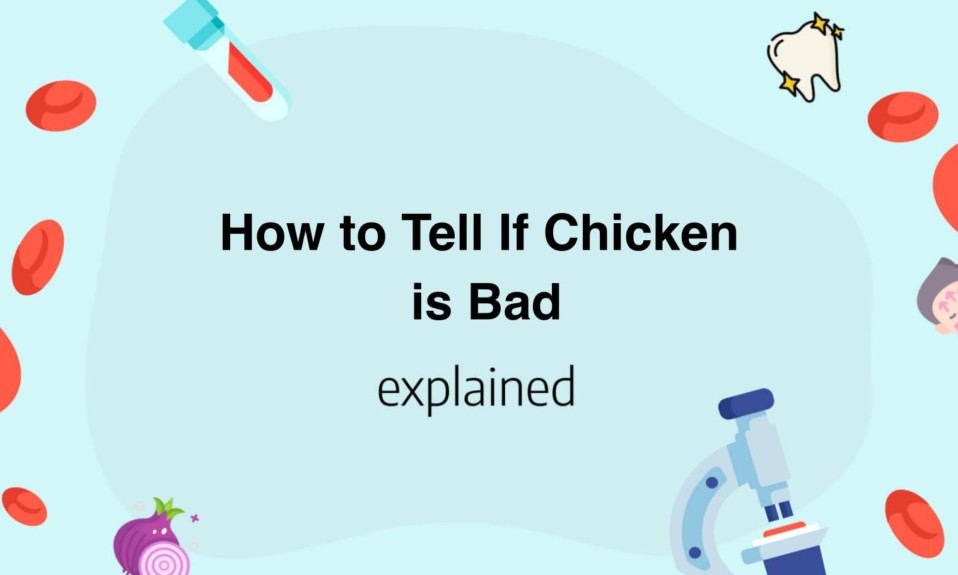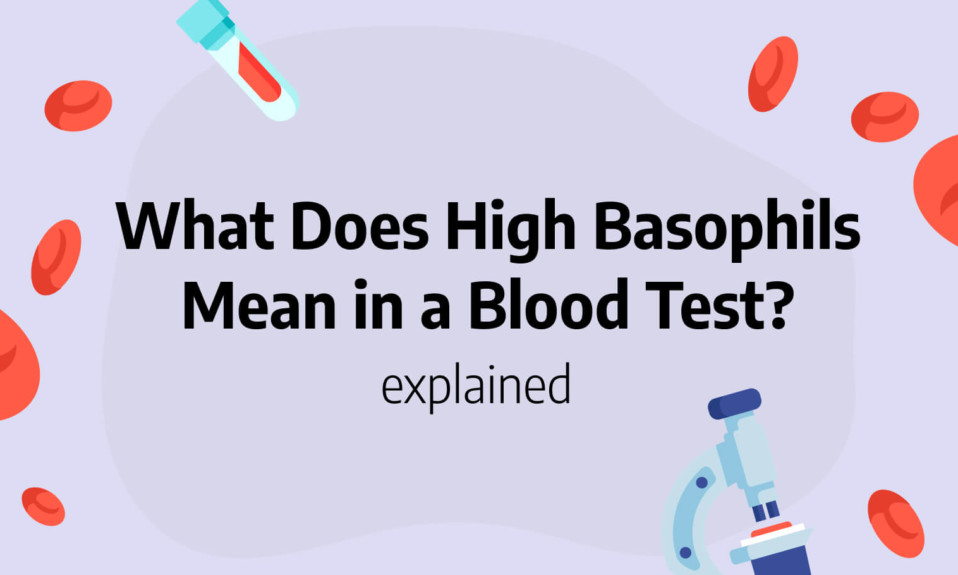If you’re concerned that the chicken you bought may have gone bad, there are a few signs to look out for.
The first thing you should do is check for any unusual smells.
If the chicken has a sour or strong odor, it’s likely no longer fresh.
Additionally, if the texture or color of the meat appears slimy or discolored, it’s also best to err on the side of caution and dispose of it.
Knowing how to tell if chicken is bad can help ensure that you and your family stay safe while enjoying your meals.
- Look for a change in color of the chicken, it should not have a grayish tint or be yellowed.
- Check the odor of the chicken, fresh chicken should have little to no scent while bad chicken will have a strong odor.
- Observe if there is any sliminess or stickiness on the surface of the raw chicken, this indicates bacterial growth.
- Feel the texture of the chicken, it should not be slimy or sticky to the touch. Instead, it should have a firm and springy texture.
- Finally, if the chicken has been in the refrigerator for more than four days, it is best to discard it as a safety precaution.
Signs of Spoiled Chicken
The signs of spoiled chicken can range from unpleasant odor to changes in texture and color.
One of the most obvious signs is a sour or rancid smell.
This occurs when bacteria break down the protein in the chicken, giving off a putrid odor.
Another sign is discoloration, such as grey or green patches on the surface of the chicken.
Additionally, if you notice the chicken has a slimy texture or feels sticky, it is likely spoiled.
It’s important to note that not all signs of spoiled chicken are visible.
Some may not even produce a noticeable smell or texture.
This is why it’s crucial to pay attention to the “use-by” or “best-by” date on the packaging.
These dates indicate the optimal time for consumption and ensure the chicken is still fresh.
If you are unsure whether the chicken has spoiled or not, err on the side of caution and discard it.
Eating spoiled chicken can lead to food poisoning and other health risks.
To prevent spoilage, store raw chicken in the refrigerator or freezer at the appropriate temperature.
Cook chicken to the appropriate internal temperature (165°F or 74°C) to kill any harmful bacteria.
If you are planning to freeze chicken after purchase, do so before the “use-by” or “best-by” date expires as freezing does not prolong the lifespan of spoiled chicken.
In summary, keeping an eye out for signs of spoiled chicken can prevent potential health risks.
Remember to check the “use-by” or “best-by” date and store and cook the chicken properly to ensure its freshness.
Smell Test: Determining Chicken Freshness
Determining the freshness of poultry can be challenging, especially if the visual cues appear deceiving.
This is where the smell test comes in handy.
The smell test involves detecting off-odors emanating from the chicken.
It is not uncommon for fresh chicken to have a mild, slightly sour smell.
However, if the smell is strong, sour, or pungent, then it is an indication of spoilage.
An established odor indicates that the chicken has surpassed its prime, and it is unsafe for consumption.
The odor emanates from the bacterial decomposition of the chicken.
Spoiled chicken is not only unappetizing but also potentially dangerous to consume.
Bacteria present on the chicken can lead to foodborne illnesses such as salmonella and campylobacteriosis.
As a health expert, it is essential to point this out when educating consumers regarding the importance of checking chicken freshness.
Aside from the smell test, there are other ways to determine chicken freshness.
Visually inspecting the chicken for discoloration, abnormal texture, or stickiness is another way to detect spoilage.
Also, checking the sell-by date or expiration date is an essential way of ensuring chicken is not past its due date.
In conclusion, performing the smell test on chicken is a crucial step in determining its freshness.
It is a quick and easy way to detect off-odors, which is a strong indication of spoilage.
Always remember that a little precaution can save a lot of trouble.
Safe Cooking Tips for Spoiled Chicken
When it comes to handling spoiled chicken, safety measures are important to prevent food poisoning.
One of the first things to keep in mind is the storage time.
Once you buy chicken, you should put it in the fridge right away and cook it within two days.
If you are not able to cook it within two days, you need to freeze it.
If you already have cooked chicken that you are not going to eat immediately, put it in the fridge within two hours after cooking, to prevent bacterial growth.
Secondly, it is essential to cook chicken well.
Whether it’s a whole chicken, drumstick or breast, you need to make sure the meat is thoroughly cooked.
The internal temperature should be at least 165°F (74°C).
This can be measured using a meat thermometer to ensure the chicken is cooked all the way through.
Any juices coming from the chicken when it’s cooking, must also run clear without any traces of blood.
To avoid spreading bacteria around your kitchen, keep everything separate from raw chicken, and always wash your hands, utensils, and surfaces after using them.
Another important aspect is to avoid cross-contamination.
Always use separate cutting boards, plates, and utensils for raw chicken, and cooked chicken.
Make sure that when handling raw chicken, you don’t touch other foods, including vegetables, fruits, or cooked meats.
Also, make sure the chicken juices don’t drip onto other foods.
If this is done, harmful bacteria from the raw chicken could transfer to the other foods, and result in food poisoning.
It is essential to be extra cautious when eating outside.
When dining at BBQ’s, buffets, or picnics, we may not have easy access to proper cooking or dishwashing facilities.
Always make sure that cooked chicken is hot when served.
If the chicken has been left outside for more than two hours, it is advised not to eat it, even if has been cooked, as it’s likely that bacteria is already growing on it, and could result in food poisoning.
In conclusion, make sure to keep your cooking area clean, and incorporate hygiene practices, such as regularly washing your hands before and after cooking, to ensure that you’re protecting yourself and your family from potential foodborne illnesses.
Remember to store, cook, and handle chicken properly.
And always be cautious when handling chicken to prevent the spreading of bacteria.
Health Risks of Eating Spoiled Chicken
Eating spoiled chicken can pose many health risks to an individual.
Spoiled chicken can cause food poisoning such as salmonellosis, campylobacteriosis, and Clostridium perfringens.
Symptoms of food poisoning include diarrhea, abdominal cramping, fever, and vomiting.
These symptoms usually begin within 4 to 36 hours after eating spoiled chicken.
In severe cases, food poisoning can cause dehydration, which may require hospitalization.
It is important to note that the bacteria that cause food poisoning are not discernible to the naked eye; this means that the chicken may appear fresh on the outside, but its internal parts may be contaminated.
To avoid the risks associated with eating spoiled chicken, follow the proper food handling and cooking techniques.
Always store chicken in the refrigerator below 40 degrees Fahrenheit.
Discard any chicken that has been left at room temperature for more than two hours, or one hour in temperatures above 90 degrees Fahrenheit.
When cooking chicken, make sure the internal temperature reaches at least 165 degrees Fahrenheit.
Using a meat thermometer can help ensure that the chicken is thoroughly cooked and eliminate any bacteria that may cause food poisoning.
It is also important to avoid cross-contamination by using separate utensils, cutting boards, and containers when handling chicken.
Clean all surfaces and utensils with hot soapy water after preparing chicken.
In conclusion, eating spoiled chicken can have severe health implications, including food poisoning that can cause hospitalization.
It is important to handle and cook chicken properly to ensure its safety and avoid any health risks.
Following the above steps can help you stay healthy and avoid food poisoning caused by spoiled chicken.
You’ll also like: Can dogs eat tamarind
How to Properly Store Raw Chicken
To properly store raw chicken, it is essential to follow a few guidelines.
First and foremost, always keep raw chicken separate from other foods to avoid cross-contamination.
This means storing it on the bottom shelf of the refrigerator in a tightly sealed container or plastic wrap to prevent any juices from dripping onto other foods.
Additionally, wash your hands and any utensils, cutting boards, or surfaces that come into contact with raw chicken with hot, soapy water to kill any bacteria.
Use a separate cutting board for raw chicken to prevent the spread of bacteria to other foods.
When freezing raw chicken, make sure to wrap it tightly in plastic wrap or freezer bags and label it with the date.
This will prevent freezer burn and help you keep track of the chicken’s freshness.
When thawing frozen chicken, never leave it out at room temperature.
Instead, thaw it in the refrigerator or in cold water, changing the water every 30 minutes.
This will help prevent bacteria growth and maintain the chicken’s quality.
It’s important to cook chicken thoroughly to eliminate any harmful bacteria.
Use a meat thermometer to ensure the internal temperature of the chicken reaches at least 165°F (74°C).
Never eat undercooked chicken as it can lead to food poisoning and other health issues.
Properly storing and handling raw chicken is crucial for food safety.
By following these guidelines, you can safely enjoy your favorite chicken recipes without worrying about the risk of foodborne illness.










